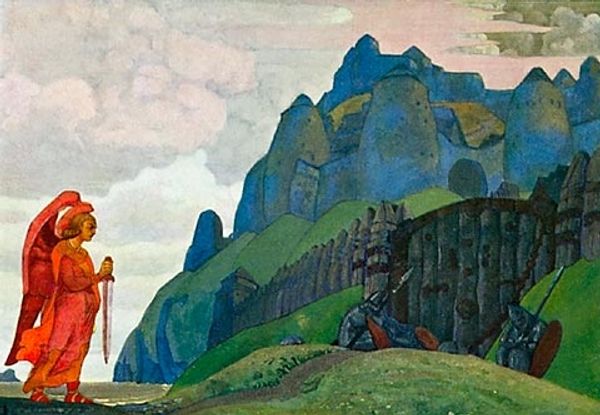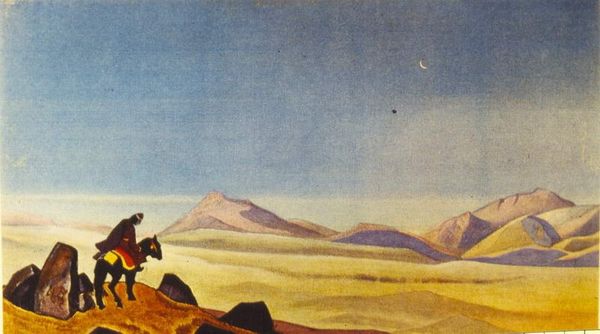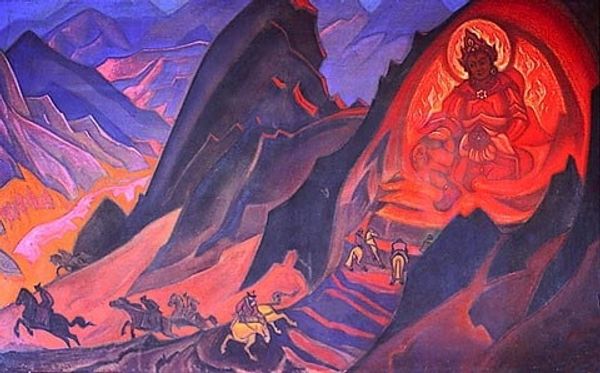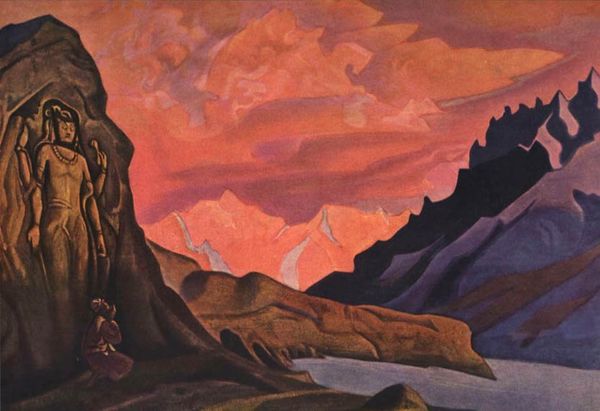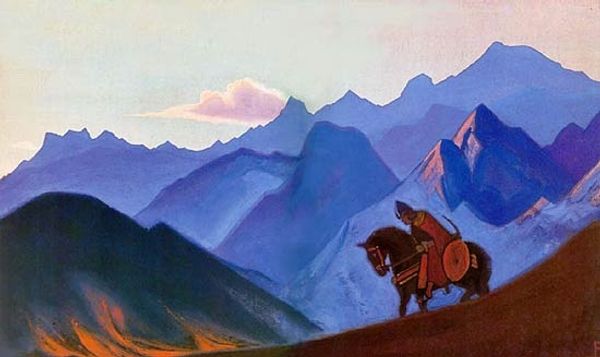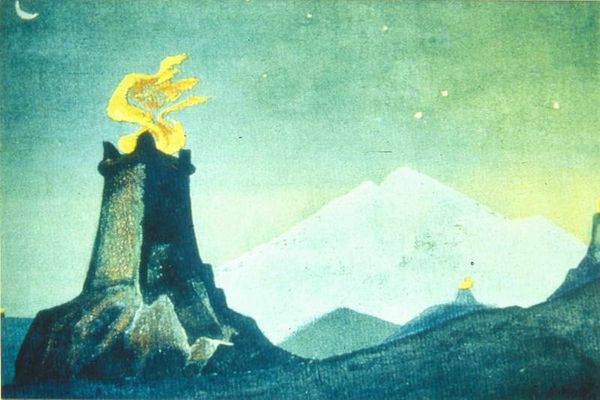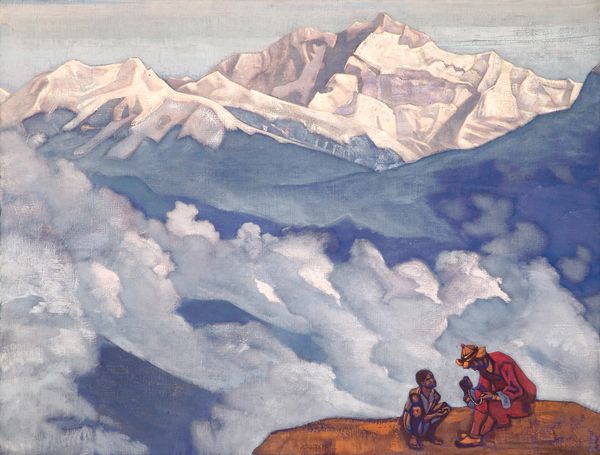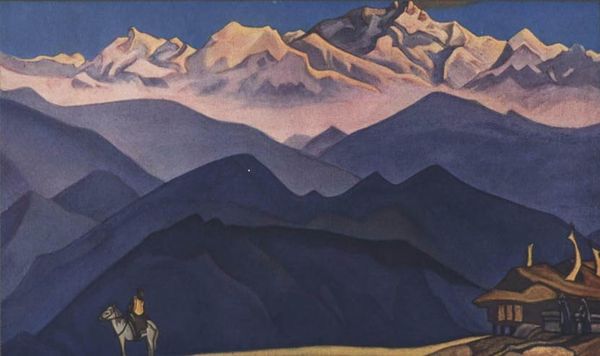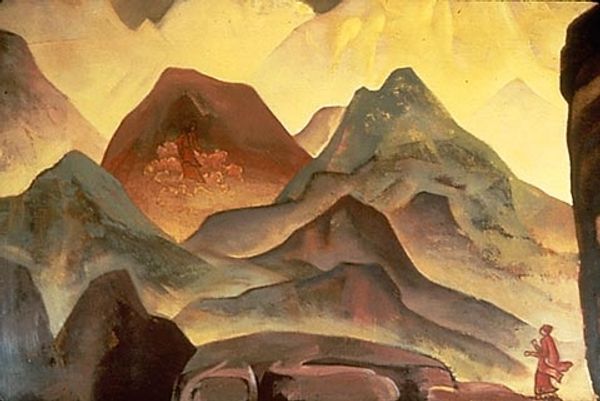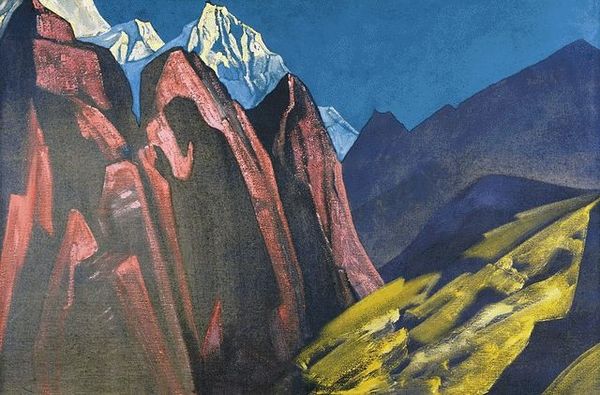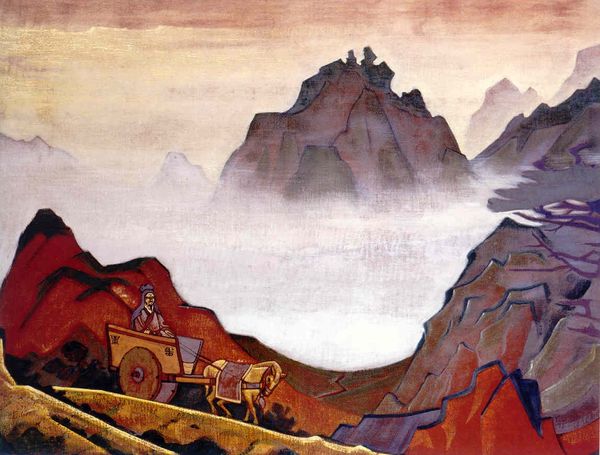
Copyright: Public domain
Editor: This is "Chenrezig," painted in 1931 by Nicholas Roerich. The combination of tempera and oil gives the mountain landscape and the figures this intriguing otherworldly quality. I’m immediately struck by the contrast between the vast, serene mountain and the small, active figures in the foreground. What story do you see unfolding here? Curator: It’s more than just a story, isn't it? Roerich, deeply invested in Eastern spiritualities and Theosophy, uses landscape to explore power dynamics. The looming mountain, rendered in almost ethereal tones, becomes a symbol of the spiritual authority, while the figures are representatives of humanity's quest for enlightenment, small but not insignificant. Roerich himself was criticized as dabbling, or worse, appropriating beliefs of oppressed peoples of color without actually engaging with social justice. Do you see any evidence for this argument here? Editor: I do see it now that you mention it. I was focused on the harmony and tranquility of the image. But what if the artist truly felt a spiritual connection and wanted to depict a peaceful moment? Wouldn't preventing an artist from borrowing cross-culturally impede discourse? Curator: Those concerns may also miss an equally important point, that the spirituality the work depicts isn't a free-floating harmony available for anyone to access. Roerich himself was a problematic figure, enmeshed with oppressive political elements. I guess it gives me pause to see the visual language of Orientalism without seeing real world political change and the struggle for cultural determination, and this concern is magnified by Roerich’s connections with historical currents like the Tsarist White Movement and later flirtations with figures aligned with fascism. Editor: So, beyond its visual appeal, this painting compels us to grapple with complex ethical questions surrounding cultural appropriation and artistic expression. It forces a broader and difficult conversation. Curator: Precisely. Art serves as both mirror and window—reflecting societal values and opening our eyes to hidden histories. Examining work that can simultaneously move us with their beauty, yet makes us consider harmful structures from their time, makes the whole art viewing experience something transformative.
Comments
No comments
Be the first to comment and join the conversation on the ultimate creative platform.
